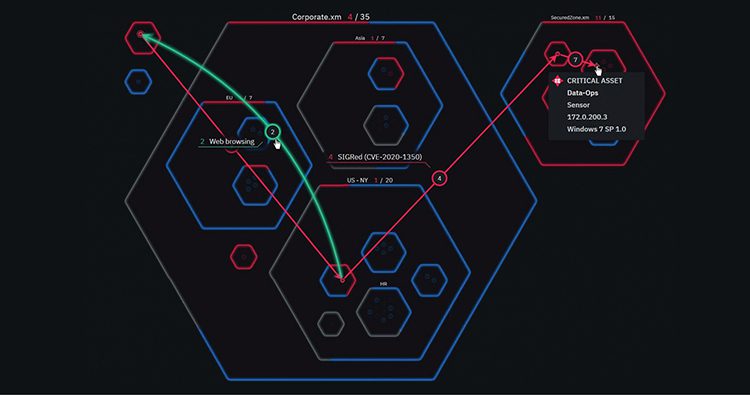|
Getting your Trinity Audio player ready...
|
How do we best protect what’s most valuable to us?
That’s a question that we all wrestle with. For today’s enterprises, few things are more valuable than the data they hold and manage. Keeping that precious information safe requires constant vigilance.
The numbers don’t lie. In 2021, the number of cyber-attacks and data breaches increased by 15.1%, according to Forbes Magazine.
So how do we reverse this trend? One of the best ways to think about this is through the prism of vulnerability assessment. If you think of your business as a house, regular vulnerability assessments are akin to conducting regular checks to see if doors and windows are locked or reviewing home security camera footage.
To help you get a better grasp on this subject, let’s review how vulnerability analysis works and explore the virtues of popular vulnerability assessment tools such as scanning and attack path management software.
Understanding Enterprise Vulnerability Assessment
Vulnerability assessments are designed to uncover security weaknesses in an information system. The most common mechanism for conducting such an assessment is through scanning.
Vulnerability scans come in the following forms:
- Network-based scans
- Host-based scans
- Wireless scans
- Database scans
- Application scans
These scans may be directed at internal, external, or environmental entities. Scanning can be manual or automated. The goal is to identify security gaps, then move on to the remediation phase.
Vulnerability Assessment vs Penetration Testing
Penetration tests (or red team exercises) allow organizations to really put their defenses under the microscope. In such scenarios, human testers play the role of “ethical hackers” and use their full range of expertise and abilities to try and breach an organization’s defenses. Penetration testers assume the perspective of attackers and will use a variety of online and offline tactics to successfully launch an attack. Once the test is complete, a detailed audit is prepared, and any existing gaps can be filled.
While a scan is like checking to see if your front door is locked, a pen test looks for ways to defeat the lock, open the door, walk in and help yourself to all the valuables stored inside. In other words, where a scan is concerned about if vulnerabilities exist, a penetration test can also show you how they may be exploited and at what ultimate cost.
Both of these approaches are often carried out in tandem as part of a security risk assessment plan. Given that scanning is far less labor-intensive, it can be done with more frequency than full-fledged penetration tests. Yet there is another tool that can be integrated to extend the combined power of these tools: Attack Path Management.
How Attack Path Management Fits Into Vulnerability Assessment
Vulnerability assessments and penetration tests are complementary, as both have desirable qualities the other lacks (scans are automated and relatively quick; pen tests are rigorous and provide more context). Yet there is a third option that merges the best of both tools: Attack path management.
Advanced attack path management platforms run automated simulations, much like penetration testers or red/blue/purple teams. Just like a pen test, these platforms launch sophisticated simulated cyber-attacks along the most likely attack paths and provide detailed guidance for closing any vulnerabilities that are uncovered. Like a pen test, they don’t just check the locks; they look for ways to circumvent them and show the damage that could ensue.
An attack path management platform has something in common with conventional vulnerability assessments as well. Just like automated scanners, these platforms are efficient. They work safely and continuously, launching simulated attacks with no downtime, ensuring that any emerging vulnerabilities are identified before an adversary can slip through the door.
The Power of XM Cyber’s Attack Path Management Platform
XM Cyber technology investigates policy noncompliance issues and security misconfigurations. It can identify the most critical assets and identifies all attack path possibilities, protecting your assets from cyber-attacks and intrusion attempts. Then it quickly connects the dots from breach point to critical asset if there exists any potential attack path.
Next, it creates a prioritized remediation plan, based on real risks to your critical assets, that directs your teams to quickly eliminate steps hackers would take inside your environment. Unlike mere scans that offer severity scores, XM Cyber provides key insight into the risk level to your most critical assets. It shows you not only where you’re vulnerable, but how those vulnerabilities will be exploited to jeopardize your most valuable, sensitive assets.
In short, XM Cyber’s technology is the leading example of the “best of both worlds” approach to managing vulnerabilities and developing an accurate risk assessment. By integrating attack path management technology into your existing security plan, you can maintain security compliance, enable a layered approach to cybersecurity, protect the entire IT ecosystem and unlock the extraordinary potential of continuous security posture improvement.
Related Topics




